
Rubus adenoleucus – Section Corylifolii
back to Alphabetical index · Taxonomic index
This is a poorly known species originally described from France and first recorded in Britain in 1937. More recently it has been found in widespread localities across the southern half of England and Wales and may possibly be relatively common. It has striking reddish-purple shining stems with numerous prickles and glands.

The panicle (above) is cylindrical with a cluster of medium sized flowers at the apex and some long ascending branches below. The rachis is similar to the stems but thinly hairy above. Petals are are a very pale pink colour, but often appear pure white (especially in photographs), broadly elliptical, c.12 x 9mm, or somewhat orbicular; usually contiguous. Sepals are reflexed, becoming erect later, with long, fine points and densely glandular. Carpels are glabrous.


Stamens (when viewed from the side) are a little longer than the top of the sytles, which are pale yellow. Photos below are of the same flower at different angles.
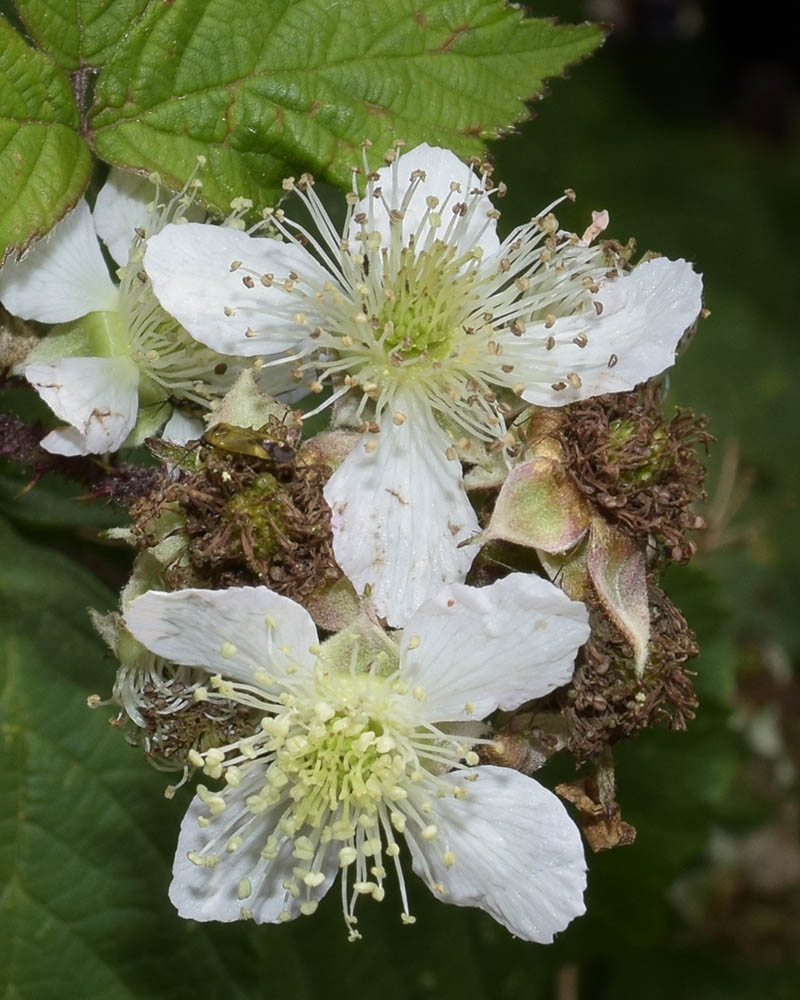
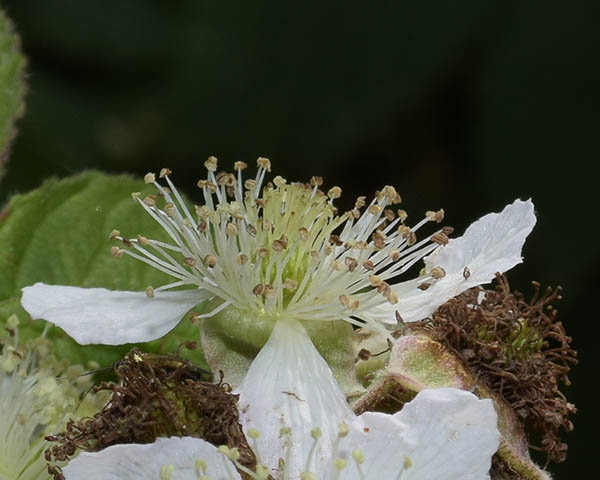
In common with other Corylifolii, fruits of this species appear to be fairly small, some being abortive or having fewer drupelets. Note also the sepals clasping the fruit.

Leaves are 3-foliate on upper parts of stems, 5-foliate below. The terminal leaflet is broad and widest at or slightly below the middle, relatively small (typically 6 x 4-5 cm, but occasionally up to 8 x 7cm). The basal part is rounded and the upper half is triangular, with an acuminate to cuspidate, medium-long apex. Some therefore appear rounded-rhomboid in shape, others broadly elliptic. Unlike many other Corylifolii the leaflets are relatively thin in texture and flat, with shallowly marked veins. Margins are sharply serrate, slightly crisped, and with slight lobing on the terminal leaflet. Also note that the leaflets are not strongly imbricate. Overall, the leaves of this species are very distinctive, so when combined with the stems make it identifiable without flowers present.



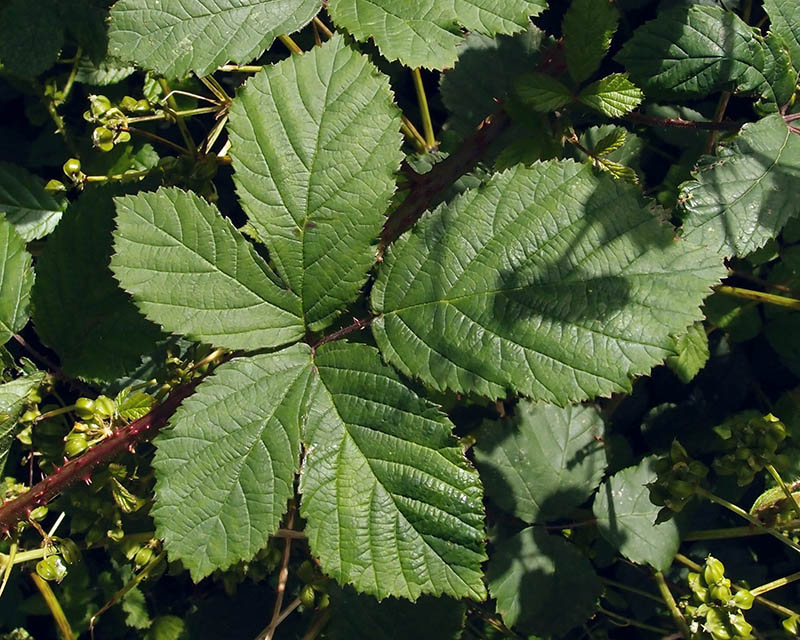

Leaflets are shortly hairy and paler below, but not felted.

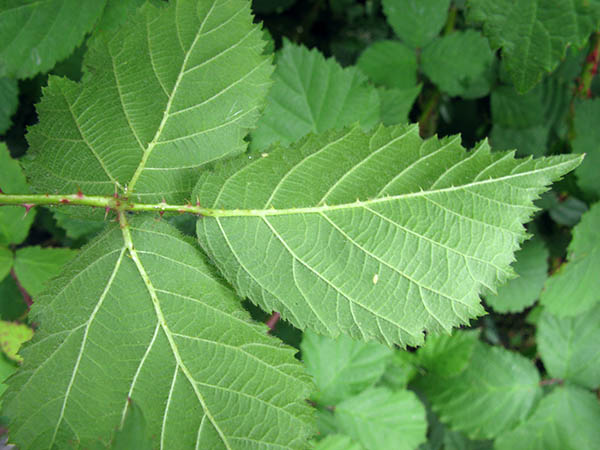
The stem becomes a deep red or purple colour after exposure to the light. It is bluntly angled to almost round in cross-section, glabrous and shining with abundant short and medium-long glands. Prickles are also numerous, 20-30 per 5cm. Main prickles occur on (or next to) the angles, but some are also present in the middle of the faces. They are broad-based, slender, generally straight and patent or slightly declining, bright red with a yellow tip.

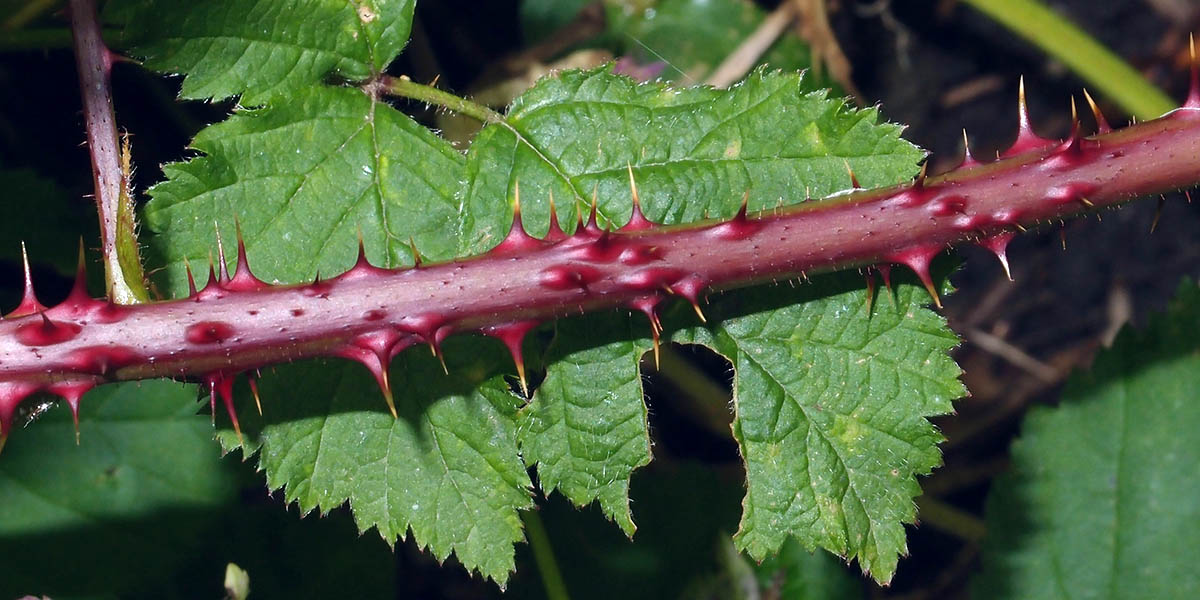

Note the lanceolate Corylifolian stipule in this photo (most other brambles have narrower, filiform stipules).

Thanks to Debbie Allan for providing some of these photos.